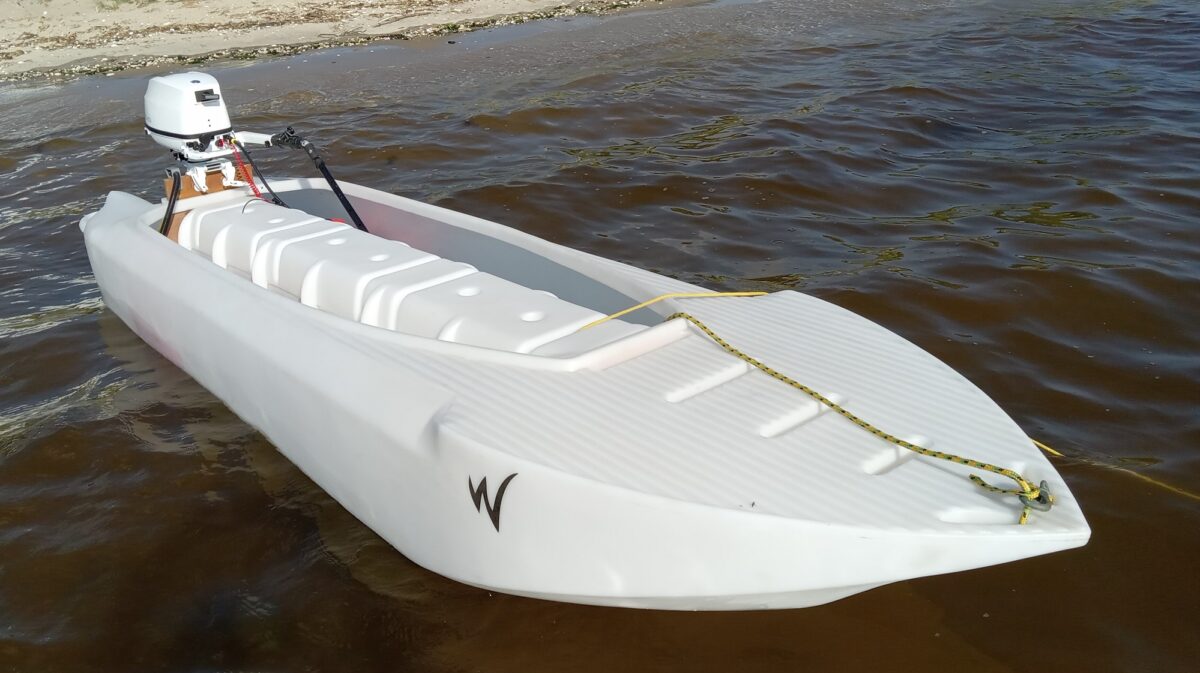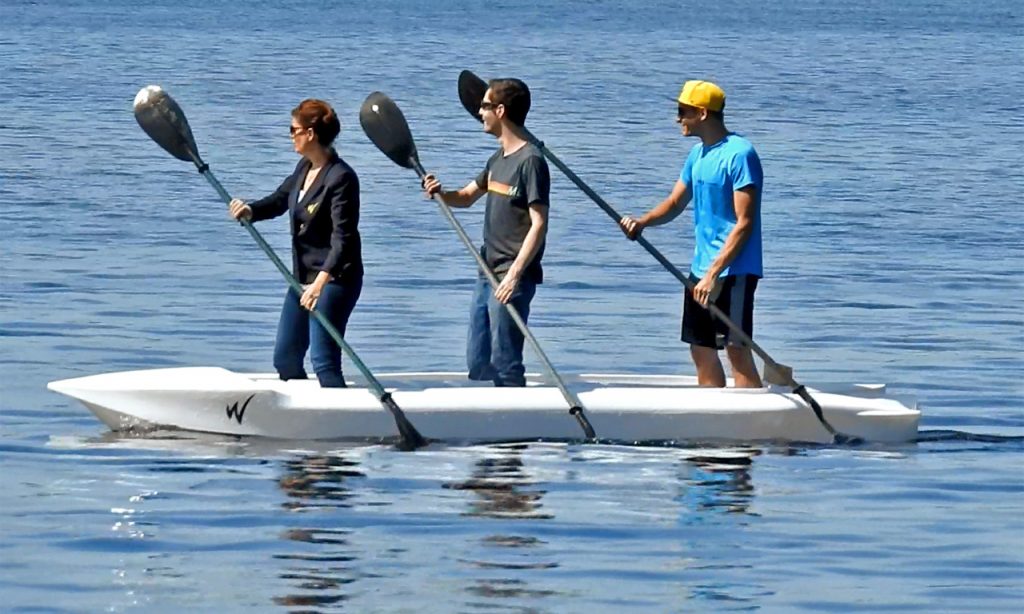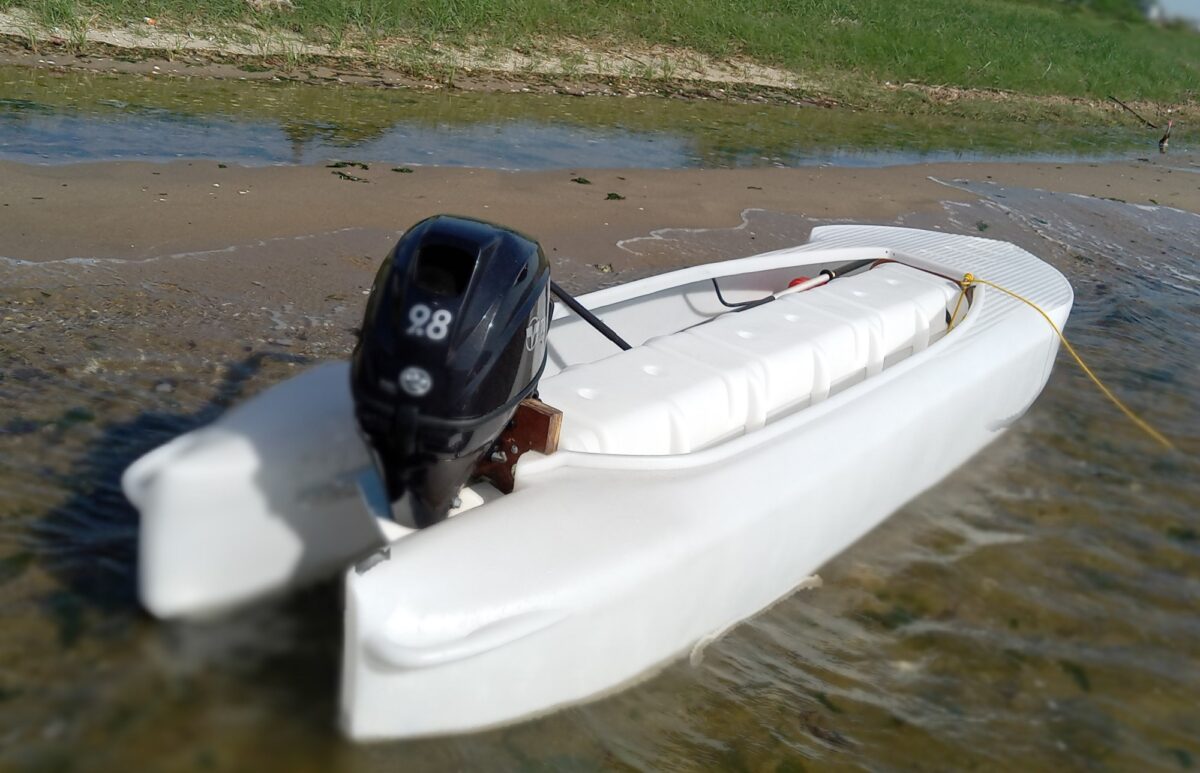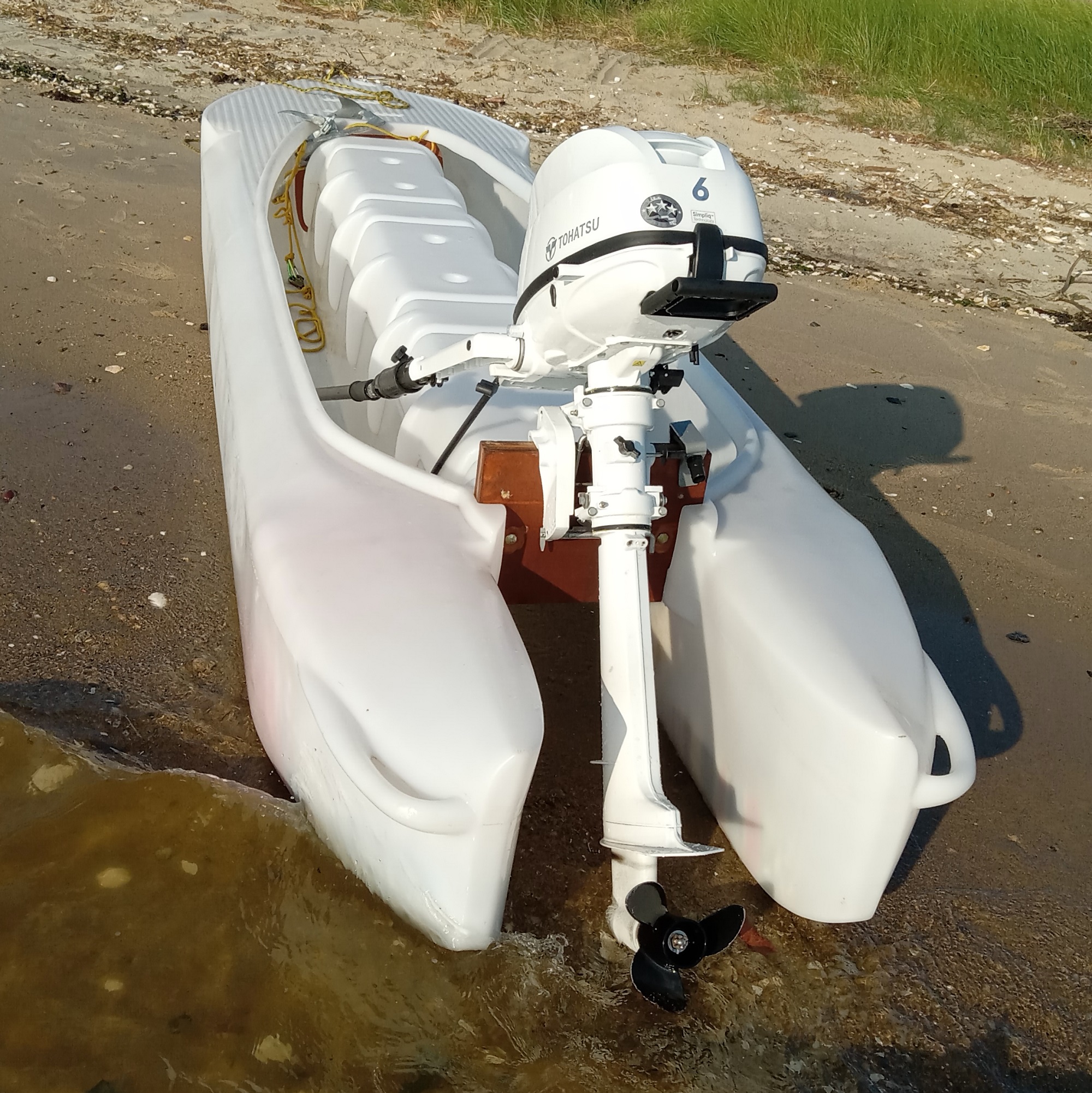Wavewalk’s S4 is known mostly for being a stable, high performance, ultra lightweight (only 100 lbs!) motorboat, I.E. microskiff, but it’s also an accomplished human-powered craft, and surprisingly, a very versatile one:
The S4 is a 38″ wide true catamaran (twin-hull), and as such it is most stable and as well as an excellent tracker. Both these capabilities make it easy and convenient for paddling, and the fact that it features a 15″ high saddle seat adds leverage and power to every paddle stroke. The S4 cockpit’s downward sloping sides allow for paddles to move smoothly along them, and convey to the paddlers the feeling of the cockpit being narrower than it actually is.
The S4 works perfectly as a canoe, both in the solo and tandem modes. In fact, it works better for canoeing than traditional canoes do. For example, the S4 can go in choppy water of up to 2 ft, while most canoes won’t do in such conditions. Its catamaran hulls provide extreme stability as well as excellent tracking, and the 17″ high hulls provide adequate free board and relative dryness even in the ocean.
The S4 excels as a kayak as well, and people who prefer paddling in the kayaking style, namely with dual-blade (kayak) paddles, benefit from all the above listed advantages, plus the fact that unlike kayaks, the S4 is totally back-pain free, since its users ride an ergonomic saddle seat, instead of being artificially restricted by the uncomfortable L position.
When it comes to stand-up paddling (SUP), the S4 outperforms every SUP paddle board in terms of stability, thanks to the fact that its users can rely on a true, full catamaran twin-hull, with their feet positioned lower than the waterline, instead of on top of a board, several inches above waterline, as they are with SUP boards.
One, two, and even three S4 users can paddle it standing using both SUP paddles and long dual-blade (“kayak”) paddles, as seen in this video:
On top of this, the S4 is easier to pole in comparison with other microskiffs and flats boats. This is due not just to the fact that it’s the most lightweight miscroskiff out there, but also thanks to the fact that the user stands with their feet lower than waterline, which adds leverage and power to every push, and helps keeping the boat going in a straight line (tracking), as catamarans typically do.
In sum, whether you have a canoe, kayak, or SUP paddle on board, the S4 will work very well for you, and the same is true if you have a push-pole.



